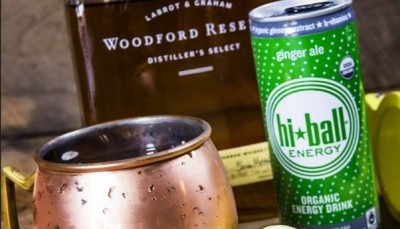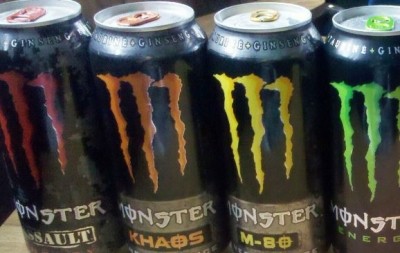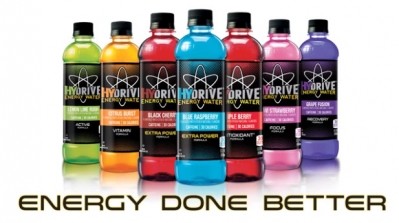One for the girls? Hype Energy targets US market, with some help from Kim Kardashian and Candice Swanepoel…
Unlike some other new energy drink market entrants, says Hype Energy USA president John Jansheski, Hype Energy has a proven track record of success in other markets. In fact, the brand been around for almost as long as Red Bull, first hitting the market in the 1990s and subsequently gaining a footing in more than 40 countries from Canada and Spain to Iran and Nigeria.
But until this year, it has not had a meaningful presence in the US, says Jansheski, who founded the DenTek oral health business in the 1980s and has recently secured the exclusive license to sell Hype Energy in the US.
There is space for a brand that is more fashion and lifestyle oriented
To show he means business, Jansheski has kicked off his US launch campaign by recruiting reality TV star Kim Kardashian and Victoria’s Secret model Candice Swanepoel as brand ambassadors - and is going after consumers who want a caffeine hit, but are not inspired by endless pictures of motor sports.
Swanepoel’s new ad campaign for the brand featured in VOGUE’s August issue, says Jansheski, while Kardashian will join as a spokesperson in late 2014 and has filmed her own ad campaign for the brand that will be unveiled later this year.
He adds: “There are some amazing competitors and very entrenched brands in the US energy drinks market, but I still think there is space for a brand that is more fashion and lifestyle oriented.”
Not every guy is into extreme sports either
The Hype Energy brand, which is owned by ex-Formula One racing driver Bertrand Gachot, has four variants in the US market: MFP (classic), ENLITE (low cal), ZERO (zero cal) and UP ice cool berry (with fruit juice), and has 80mg caffeine per 8.40z can, B vitamins, and no artificial colors or preservatives.
But it’s not going down the ‘all-natural’ route or just targeting fashion-conscious young women, says Jansheski.
“It’s a lifestyle energy drink. Not every guy is into extreme sports either. It’s about being the best at whatever you want to do, whether it’s art, fashion, music, photography or whatever business you are in.
“It’s going to take time to prove ourselves, but we’re making a fashion statement by getting Candice and Kim on board."
We’re making a fashion statement by getting Candice and Kim on board
The US launch has begun in around 500 stores in Tennesse - where Jansheski is based - but he’s now in conversations to secure wider distribution with retailers in c-stores and food, drug and mass channels across the nation, and talking to potential brand ambassadors in other fields including music.
As for price, he’s pitching the product at around $1.99 for an 8.4oz can vs Red Bull at $2.19, and says c-stores represent a key opportunity, in part because buyers are increasing space allocation to energy drinks to reflect their rapid growth.
As for distribution, he’s exploring various opportunities for a wider rollout, noting that the tie up between Coca-Cola and Monster may create new opportunities in that Anheuser-Busch (which currently distributes some product for Monster) may be looking to pick up new business when the bulk of Monster’s products shift to the Coca-Cola system.
The global energy drinks market
According to Canadean data, Red Bull is the global market leader in energy drinks with a 15% share by volume, followed by Monster at 12% and Coca-Cola at 5%. In value share terms, however, Red Bull has a much more substantial lead, with a 24% share vs Monster’s 9% share, reflecting Red Bull’s premium pricing and strong presence in bars, clubs and gas stations.
As for the US, relentlessly negative PR, a flurry of lawsuits and an FDA-probe have not dampened consumers’ enthusiasm for energy drinks, dollar sales of which grew 10% in the 12 weeks to August 2, according to Nielsen data shared by Wells Fargo.
And while SKUs have proliferated and the market has become more segmented, the flagship products that first attracted consumers to the category are still driving its growth, former Red Bull COO Gary Smith, told FoodNavigator-USA in a recent interview.
“The core products are still driving the growth and you only have to look at the space allocation to see that.”
As for marketing, said Smith, who now runs Big Red, “Early on the reference point was built around small groups of opinion leaders, extreme sports enthusiasts and so on, but we knew everyone was drinking them, and we built [different marketing] platforms around studying, driving, working and so on. My 90-year-old great grandfather drank Red Bull - as it said it helped him drive.”
Originally launched by Hard Rock Cafe founder Barry Fox, Hype Energy was taken over by former Formula One racing driver Bertrand Gachot in 1997.










